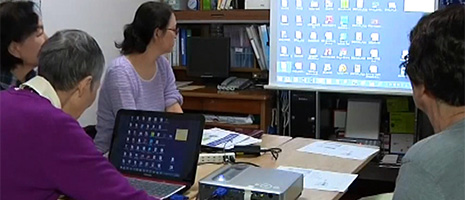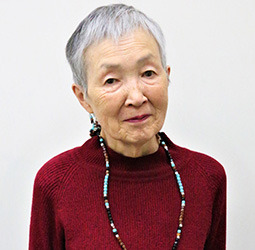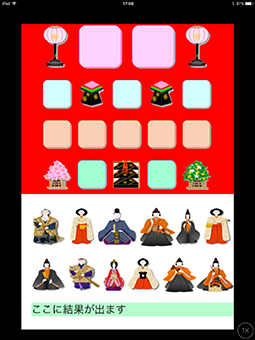Home > Highlighting JAPAN > Highlighting Japan December 2017 > Where Women Shine
Highlighting JAPAN


Apps for the Elderly
An 82-year-old female Japanese programmer is building IT communities for the elderly.
In June 2017, a Japanese woman caught the eyes of the world as the oldest programmer when she participated in the Worldwide Developers Conference 2017 organized by Apple Inc. for programmers. Her name is Masako Wakamiya (82) and she was there at the invitation of Tim Cook, CEO of Apple Inc., who was very keen to meet her.
After retiring from her job at a major bank, Wakamiya was unable to get out as much as expected because she had to care for her mother. However, she has an inquisitive personality and taught herself how to use a PC so that she could connect with the outside world via the Internet without leaving her home. Thanks to her innate talent, it was not long before she was involved in setting up an online bulletin board for the elderly. Today she holds PC classes at her home and at community halls, teaching older people how to enjoy personal computers and smartphones.
When smartphones became commonly available, Wakamiya was interested in apps, but she felt that many apps were designed for young people, and that older people could not enjoy them because they found the rapid gestures difficult. So, she started to look for someone who could develop apps for the elderly. Wakamiya’s dream came closer to realization when she met Katsushiro Koizumi, CEO of Tesseract Inc., through her volunteer work to support the reconstruction after the Great East Japan Earthquake.
Wakamiya had prepared some specification sheets with her own ideas for creating apps for the elderly. She handed these specifications to Koizumi to ask him to develop apps, but he turned down her proposal, pointing out that as a woman in her 80s, Wakamiya would definitely be in the news if she built her own app for the elderly. So he encouraged her to develop the app on her own.
Wakamiya wanted to create a game app associated with the Hina Matsuri festival on March 3, a traditional event that celebrates girls’ healthy growth, so she started to learn the Swift programming language used for Apple’s iOS.
The inspiration to create the Hina Matsuri game came to her when she was helping manage a Digital Hina Matsuri event, organized by NPO Broadband School Association of which she is the Director. Elderly and disabled people who find it difficult to leave their homes could enjoy the event along with people living in remote areas via video calling and the Internet.
Wakamiya lives in Kanagawa Prefecture and Koizumi, who was helping her to develop the app, lives in Miyagi Prefecture, so there was limited time for face-to-face instruction. Koizumi used distance learning and clearly laid out flowcharts to teach her the programming knowledge needed to build apps.
As a Windows user, Wakamiya was not accustomed to operating Apple computers and, of course, she had no programming experience. She copied an entire book on programming language and wrote code to make part of the app work, but programming the app to work as a whole was difficult. Since the program itself on the display, the error messages, and the application process for submitting apps to Apple were all in English, it was extremely difficult for Wakamiya to finish the app. However, she kept herself going by setting a clear goal. She wanted to release the app in time for the Hina Matsuri festival on March 3, six months later. Never giving up, she successfully produced the app, called “hinadan,” on her own.
Wakamiya comments, “I wanted to avoid gestures that are difficult for older people with problems moving their fingers, and I wanted to create an app that people of any age could enjoy. Since older people often have dry hands, the screen doesn’t always recognize their touch so I didn’t include any swipe gestures.”
Hinadan is a simple app that shows a randomized row of hina dolls on the screen. The player moves the dolls to their correct positions by tapping with a finger.
As for anyone who would like to try to develop his or her own app, Wakamiya suggests, “Do not think too deeply, but just try to develop one. It is important to learn to understand programming by immersing yourself in it.”
These days, Wakamiya tours Japan, giving talks, working on IT education for the elderly, and promoting programming. She believes in the importance of building IT communities for the elderly and inter-generational exchange. She will continue to develop apps that teach the next generation and the whole world about Japanese traditions and culture. She is also working on building multilingual systems for her app.
Light on her feet and sporting a bright smile, the 82-year-old Wakamiya’s forward-looking attitude and willingness to take on challenges give many people hope.
© 2009 Cabinet Office, Government of Japan








